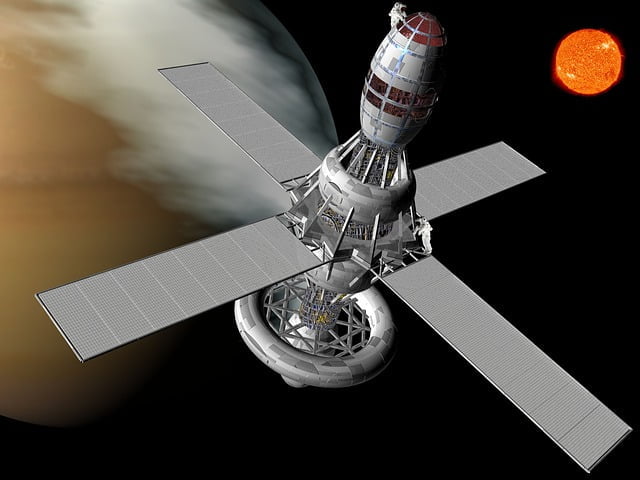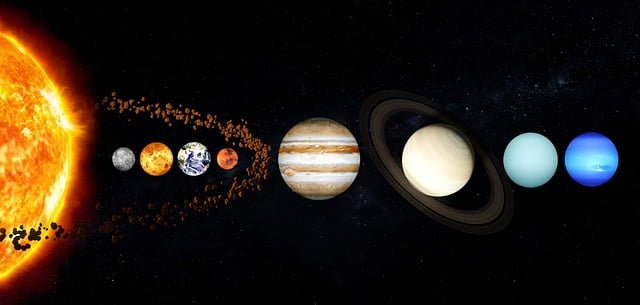Indian Space Research Organisation (ISRO) has planned a mission called Shukrayaan 1 to Venus, the nearest planet to The Earth. It is India’s 2nd planet exploration mission after Mars. Indian Space Research Organisation (ISRO) will study geological and volcanic activity as well as the atmosphere of Venus.
Shukrayaan 1 is an orbiter mission that will orbit Venus. This mission will be launched by a GSLV Mk III launched vehicle. Shukrayaan 1 mission is also called the Venus mission of India. Mariner 2 was the first mission to Venus which was accomplished by NASA in 1962.

Objective of Shukrayaan 1
Shukrayaan 1 has an objective of research in 3 areas
- Study of Surface and sub-surface stratigraphy(study of rock layers) till now no prior sub-surface (geological) study of Venus has been done.
- Study of chemical structure, composition, and dynamics of the Venus atmosphere.
- Study of solar irradiance and solar wind and their interaction with the Venus ionosphere.
Payloads of Shukrayaan 1
The payload of this mission is about 100 kg with a power of 500 watts it is manufactured by URSC ( satellite manufacturing facility of ISRO). Payloads for this mission are yet to be finalized but important are listed below.
The most important payload of this mission is a high-resolution Synthetic Aperture Radar (SAR). SAR can penetrate clouds and darkness to produce high-resolution images of the surface of Venus. It means it can collect data in any weather.
2nd important payload is it has a ground-penetrating radar, it is capable of penetrating surfaces up to some meters in depth of Venus.
Sweden will also provide an instrument to study Venus whereas the Institute of Space Physics (IRF)’s instrument Venusian Neutrals Analyzer (VNA) will analyze how charged particles from the Sun interact with the atmosphere of Venus.
Budget of Shukrayaan
Shukrayaan 1 mission costs between 500 crores to 1000 crore rupees depending on the payload type. This mission is still under consideration and waiting for formal approval.
Shukrayaan Mission Status
ISRO’s Chairman Dr. Somnath said in a recent interview that ISRO is reassessing the project but in a previous interview Dr. Somnath said ISRO is ready for “Shukrayaan Mission” and waiting for government approval.
ISRO planned to launch Shukrayaan 1 in mid-2023 but due to the pandemic launch date was increased to December 2024 and now this mission may be postponed to 2031. Currently, ISRO has many projects under the pipeline like Gaganyaan, Chandrayaan 4,& Chandrayaan 5, and making an Indian Space Station.
The optimal launch window of a mission to Venus from Earth occurs around every 19 months. Meanwhile, If ISRO gets government approval for launching for mission, ISRO has backup launch dates in 2026 and 2028 for the Shukrayaan 1 mission.
The ideal launched window comes around every 8 years, in which the distance between Earth and Venus is minimal in this ideal launch vehicle, The next ideal launch window is in 2031. If ISRO launched Shukrayaan in this window which reduce the amount of fuel required, liftoff, and most importantly money.
The U.S.A and European space agencies have already planned a Venus mission(VERITAS and EnVision) to launch in the 2031 window whereas China plans to launch its Venus mission in 2026 or 2027.
Read also Chandrayaan 4: Unlocking Lunar Mysteries Beyond Soft Landing
Is the Venus a Challenge?
The atmosphere of Venus is very toxic filled with carbon dioxide, and sulfuric acid causing a yellowish-thick cloud that traps heat and creates a greenhouse effect. So here SAR is a very helpful instrument to penetrate this gaseous atmosphere to take high-resolution pictures of the surface.
Air pressure on the Surface of Venus is more than 90 times that on Earth and similar pressure is experienced in miles deep in the ocean on Earth. This high air pressure on Venus is due to the thick atmosphere of Venus.
Venus is 2nd planet from the Sun but its temperature surpassed the temperature of Mercury the nearest planet to the Sun. The surface temperature of Venus is approx 475 degrees Celsius due to the greenhouse effect.
Venus rotates on its axis in the opposite direction as compared to the other planets in the solar system including the Earth means that on Venus Sun rises in the west and sets in the east opposite to the Earth.

Previous important mission to Venus
| Serial no. | Mission | Agency | Objective |
| 1 | Mariner 2 | NASA | Mariner 2 was the first mission to Venus from Earth to explore Venus by a spacecraft, this spacecraft flew over Venus and scanned cloud covered planet for the first time on Dec 14, 1962 |
| 2 | Magellan | NASA | this mission mapped the surface of Venus with radar first time |
| 3 | VENERA | Soviet Union | this mission made the first successful landing on the surface of Venus but the spacecraft didn’t survive long enough due to high temperature and high pressure |
| 4 | Pioneer Venus | NASA | this was a multiprobe mission in 1978 main objective was to impact the hard surface of Venus with the cone-shaped probe and collect data |
Who is the Project Director of Shukrayaan 1?
The project director for this mission is yet to be decided by ISRO.
Read Also
Chandrayaan 3: Detailed Explanation of India’s 3rd Mission to the Moon

